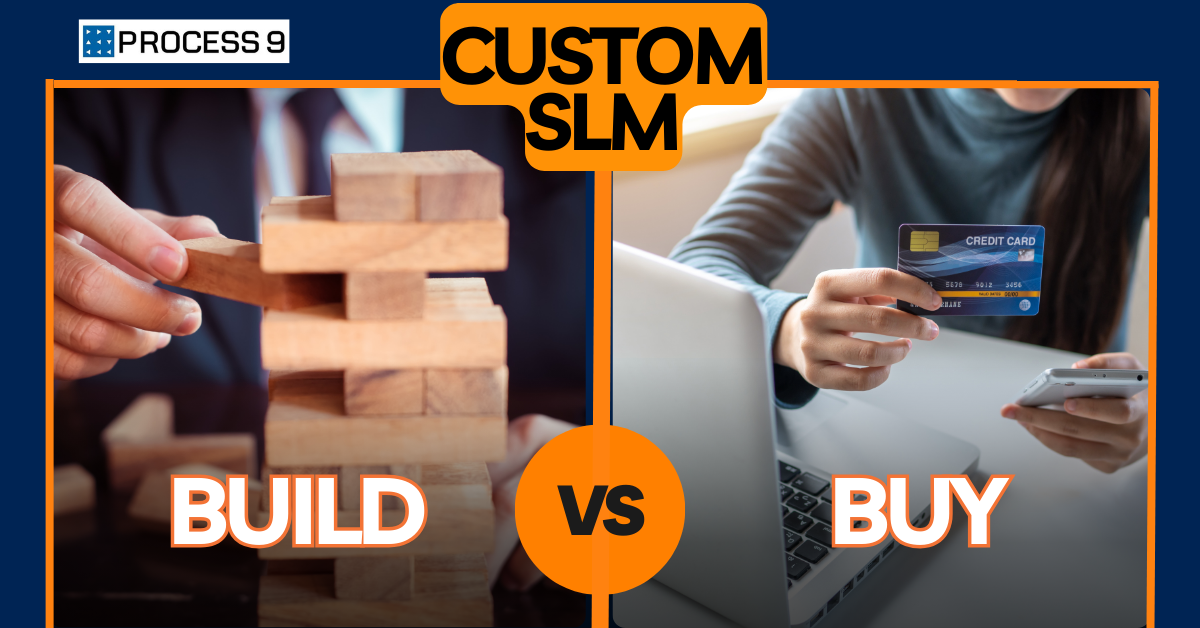As language models evolve from experimental to mission-critical in financial services, banks across Asia are confronting a high-stakes decision: Should they build their own Small Language Models (SLMs), or buy pre-built models or APIs from vendors?
This choice has long-term implications for compliance, cost, competitiveness, and innovation capacity. This article breaks down the trade-offs between the build and buy approaches and offers a framework tailored to the realities of the BFSI sector in India and broader Asia.
What’s at Stake?
Language models now power:
- Customer service (chatbots, email handling)
- Document processing (KYC, onboarding)
- Risk and fraud detection
- Credit scoring
- Advisory support
Getting this decision wrong can lock institutions into high costs, limited flexibility, or compliance risks.
Let’s examine the two paths.
Option 1: Building Your Own Custom SLMs
Pros:
1. Full Control Over Data and Compliance
Building in-house ensures your data stays within your perimeter. For BFSI institutions handling sensitive information (PAN, Aadhaar, account details), this is critical. Regulatory frameworks like the DPDP Act (India) and PDPA (Singapore) make first-party control a non-negotiable.
2. Domain-Specific Accuracy
Generic models often misunderstand financial jargon or regional nuances. A custom SLM trained on your internal documents, support transcripts, and historical data will yield higher accuracy and fewer hallucinations.
3. IP Ownership and Strategic Differentiation
Your model becomes a proprietary asset. You control its evolution, integrate it deeply across functions, and prevent competitors from gaining the same advantage.
4. Multilingual Adaptability
SLMs can be trained on localized, code-mixed languages (e.g., Hinglish), enabling superior service to diverse customers across India and Southeast Asia.
5. Cost Efficiency at Scale
While upfront costs are higher, long-term savings kick in with scale. No token-based fees per interaction, and you can optimize infrastructure usage (edge, low-power CPUs, etc.).
Cons:
- High initial investment (data, compute, talent)
- Longer time-to-deploy (typically 3–6 months)
- Requires ongoing model monitoring and tuning
- May not be viable for institutions lacking AI maturity
Option 2: Buying a Pre-Built Model or Vendor API
Pros:
1. Speed to Deployment
Pre-built models or APIs from vendors (like OpenAI, Cohere, or FinTech AI startups) can be integrated in weeks. Ideal for pilots or quick wins.
2. Lower Short-Term Costs
You avoid hiring ML teams or provisioning infrastructure. This makes it easier to get stakeholder buy-in for limited-use cases.
3. Access to Cutting-Edge Models
Top LLM vendors continuously update models, improve capabilities, and maintain security—features that are expensive to replicate in-house.
Cons:
1. Data Residency and Compliance Risk
Many vendors are hosted outside India. Data passed to APIs may violate local data sovereignty laws or trigger customer privacy concerns.
2. Limited Customization
You may be able to fine-tune models lightly, but you’ll still operate within the vendor’s architecture and limitations.
3. Ongoing Usage Fees
Most vendors charge per token or per interaction. This becomes prohibitively expensive in high-volume use cases like customer service or document analysis.
4. Vendor Lock-In Risk
Changing providers midstream is painful and costly. You’re locked into their roadmap, pricing changes, and reliability.
Comparative Table: Build vs. Buy for BFSI SLMs
| Factor | Build In-House SLM | Buy/Outsource from Vendor |
| Compliance & Data Control | Full control; meets local laws | Risky if data exits local jurisdiction |
| Model Accuracy | High – tuned to domain & language | Lower – generalized language performance |
| Customization | Deep customization across use cases | Limited to vendor capabilities |
| Time to Deploy | 3–6 months | Weeks |
| Initial Cost | High (infra, talent, time) | Low |
| Long-Term Cost | Low at scale (no token fees) | High with ongoing usage |
| Strategic Differentiation | Strong IP and integration advantage | Minimal; same tools as competitors |
| Support for Indian Languages | Native support possible via training | Weak or non-existent |
Hybrid Models: A Middle Ground?
Some BFSI institutions are adopting a hybrid model:
- Use vendor LLMs for non-sensitive, low-risk tasks (e.g., marketing content)
- Build SLMs for core tasks involving customer data, compliance, or risk evaluation
This phased approach allows quick wins while investing in long-term defensibility.
When Should You Build?
You should build if:
- You operate in a regulated market with strict data laws
- You want to own core customer experience and AI IP
- You expect high volume usage (e.g., millions of monthly chatbot interactions)
- You want to localize for multiple languages or dialects
- You have an AI strategy that supports long-term investments
Conclusion: Building Offers Strategic Leverage
Buying a language model is easy. Owning one is transformative.
For banks looking to lead rather than follow, investing in custom SLMs:
- Reduces risk
- Improves performance
- Unlocks sustainable cost efficiency
- Creates lasting differentiation
In an industry where trust, speed, and intelligence are currency, building your own models is not just a tech choice, it’s also a strategic one.
Looking for a trustworthy partner to co-build your AI, here we are!


